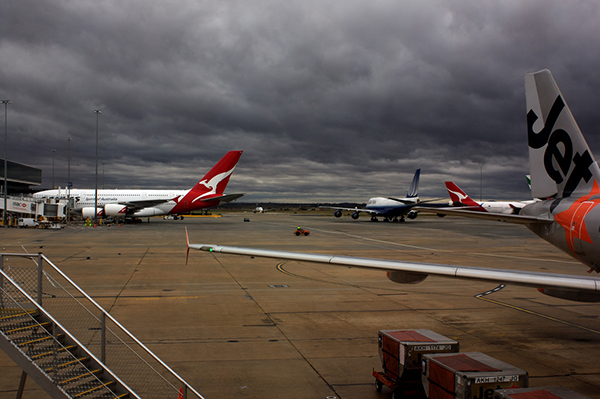
Image Via Christopher Neugebauer (Flickr)
A senior academic claims that housing developments around Melbourne airport will end up resulting in night flight curfews.
RMIT’s Professor of Environment and Planning Michael Buxton, told the ABC this morning it’s akin to a “perfect storm” as the airport and Melbourne itself record unprecedented growth.
Speaking to City Journal, Prof Buxton says this is our “threshold moment”.
“The next 10 years is going to be critical for both the corporation and the government to stop things getting worse,” he says.
Melbourne is predicted to overtake Sydney as Australia’s largest city in 2056, with the urban fringe taking on a sizeable proportion of our growth.
Successive state governments have zoned residential land sitting under the airport’s flight paths – a far cry from the near-barren paddocks of Tullamarine in 1970.
This means that the airport’s newer surrounding suburbs of Attwood and Westmeadows could potentially force a curfew if flight paths will impact residents’ quality of life.
The Age reports that even the airport itself has insisted that advertisements selling these growth areas carry warnings about airport noise.
“If a curfew is introduced, it will probably concentrate movement outside its hours, which will add to the detrimental impact on residents. Coupled with the curfew’s impact on airport operation, it’s mad all round,” Prof Buxton says.
“Introducing a curfew would be a recognition of how bad things have got – but we’re not at that point yet.”
Residents feel impact
One suburb that’s consistently felt the brunt of airport noise is Keilor. Susan Jennison is a member of Keilor’s Resident and Ratepayers Association, who says that calls to impose a curfew have fallen on deaf ears.
“Over 10 to 15 years I’ve tried to speak to public forums, which I now do via the Community Aviation Consultation Group (CACG),” she says.
As a Keilor Village resident for over 40 years, she says the consistency of international flights has led to a “constant barrage” of noise on some days.
“These flights are full of passengers, full of freight and full of fuel. It stands to reason why they fly much lower, particularly over this area,” she says.
Currently, Melbourne airport is Australia’s only major airport that operates for 24 hours.
This is touted as Melbourne’s distinct economic advantage over other Australia’s major cities. Sydney, Adelaide and Gold Coast airports all have a curfew between 11pm and 6am.
Materially, Melbourne Airport says that its 24-hour operation serves an additional two million passengers per year.
Anna Gillet, airport spokesperson, says this advantage should not be forgotten.
“This is an extremely valuable asset to Victoria and its economic wellbeing. We will continue to work with the state government to protect protect this important asset for the benefit of the local community and the wider Victorian community,” she says.
With yearly passenger numbers predicted to increase to 64.37 million in 2033 from about 29.1 million now, the projected growth in Melbourne and at the airport are creating Prof Buxton’s “perfect storm”.
“If the government doesn’t make hard decisions now, they’re not going to have any choice. They’ll be placed in a position that no government wants to be in when large numbers of people start to object about what’s happening,” Prof Buxton says.
City Journal contacted Victorian Minister for Planning, Richard Wynne for comment, but was unable to provide a response by deadline.







